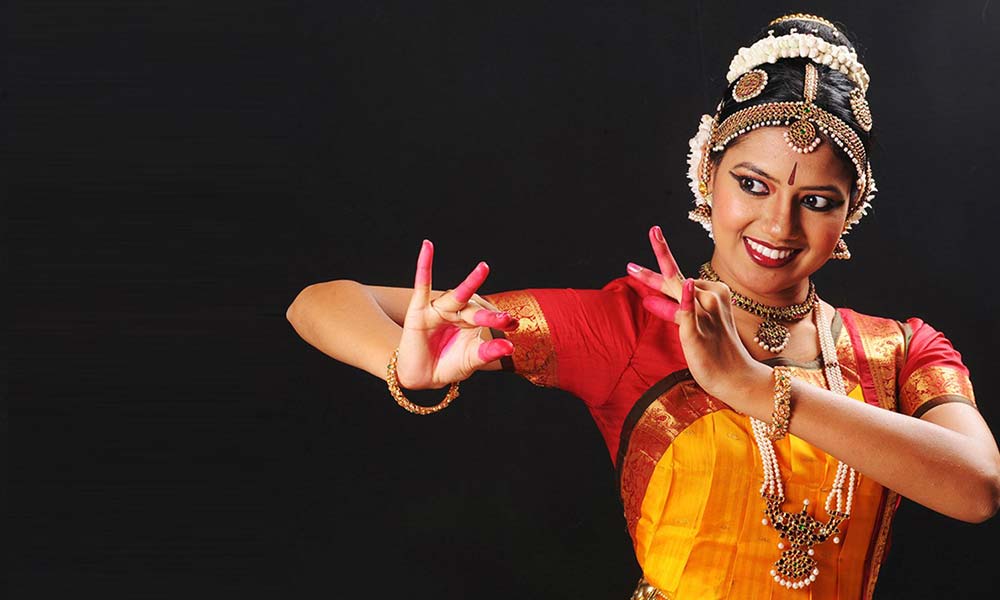

Dance and performance arts, states this ancient text, are a form of expression of spiritual ideas, virtues and the essence of scriptures. The text, states Natalia Lidova, describes the theory of Tāṇḍava dance ( Shiva), the theory of rasa, of bhāva, expression, gestures, acting techniques, basic steps, standing postures-all of which are part of Indian classical dances. The most studied version of the Natya Shastra text consists of about 6000 verses structured into 36 chapters.

Natya Shastra is attributed to the ancient scholar Bharata Muni, and its first complete compilation is dated to between 200 BCE and 200 CE, but estimates vary between 500 BCE and 500 CE. The theoretical foundations of Bharatanatyam are found in Natya Shastra, the ancient Hindu text of performance arts. People of India are proud of this culture. Bharatanatyam has a huge effect in South Indian peoples' life, parents teach their children this dance form since their childhood and children take this legacy forward to further generations. The temple has been a major center for Bharatanatyam since about 1000 CE. History ĭancers at Thanjavur, Brihadeshwara temple dedicated to Shiva. The compound word Bharatanatyam is seen to connote a dance that harmoniously expresses bhavam, ragam and talam. The term " Natyam" is a Tamil word for "dance". The word Bharatam is also seen as a backronym, with bha standing for bhavam (feelings, emotions), ra for ragam (melody, framework for musical notes), and tam for talam (rhythm). They also were instrumental in modifying mainly the Pandanallur style of dance. In 1932, E Krishna Iyer and Rukmini Devi Arundale put forward a proposal to rename Sadir aattam, also known as Parathaiyar Aattam or Thevarattam ( Tamil: சதிராட்டம்), as "Bharatanatyam", to give the dance form a measure of respect, at a meeting of the Madras Music Academy.

4 Modern revival: schools and training centers.3.3 Vocal aspects and musical instruments.2.1 Devadasis, anti-dance movement, colonial ban and the decline.Tanjavur brothers gave the actual form of the recent day repertoire of Bharatanatyam by formalizing bharatanatyam into a melodious art form. Modern stage productions of Bharatanatyam has been spread out and popular throughout India that has been done in different ways and have incorporated technical performances, pure dance based on non-religious ideas and fusion themes. It was banned by the colonial British government in 1910, but the Indian community protested against the ban and expanded its performance outside temples in the 20th century. īharatanatyam remained exclusive to Hindu temples through the 19th century. The performance repertoire of Bharatanatyam, like other classical dances, includes nrita (pure dance), nritya (solo expressive dance) and natya (group dramatic dance). The dance is accompanied by music and a singer, and typically the dancer's guru is present as the Nattuvanar, director, and conductor of the performance and art. Bharatanatyam style is noted for its fixed upper torso, bent legs and knees flexed (Arai mandi) combined with spectacular footwork, and a sophisticated vocabulary of sign language based on gestures of hands, eyes, and face muscles. These are named according to the village of the guru (with the exception of some baanis. Baani, or 'tradition', is a Tamil term used to describe the dance technique and style specific to a guru or school. Bharatanatyam is the state dance form of Tamil Nadu.īharatanatyam contains different types of baanis. Bharatanatyam is the oldest classical dance tradition in India. Ī description of Bharatanatyam from the 2nd century CE can be found in the ancient Tamil epic Silappatikaram, while temple sculptures of the 6th to 9th century CE suggest it was a highly refined performance art by the mid-1st millennium CE. It is one of the eight widely recognized Indian classical dance forms, and expresses South Indian religious themes and spiritual ideas, particularly of Shaivism and in general of Hinduism. Bharatanatyam ( Tamil: பரதநாட்டியம்) is a major form of Indian classical dance that originated in Tamil Nadu.


 0 kommentar(er)
0 kommentar(er)
